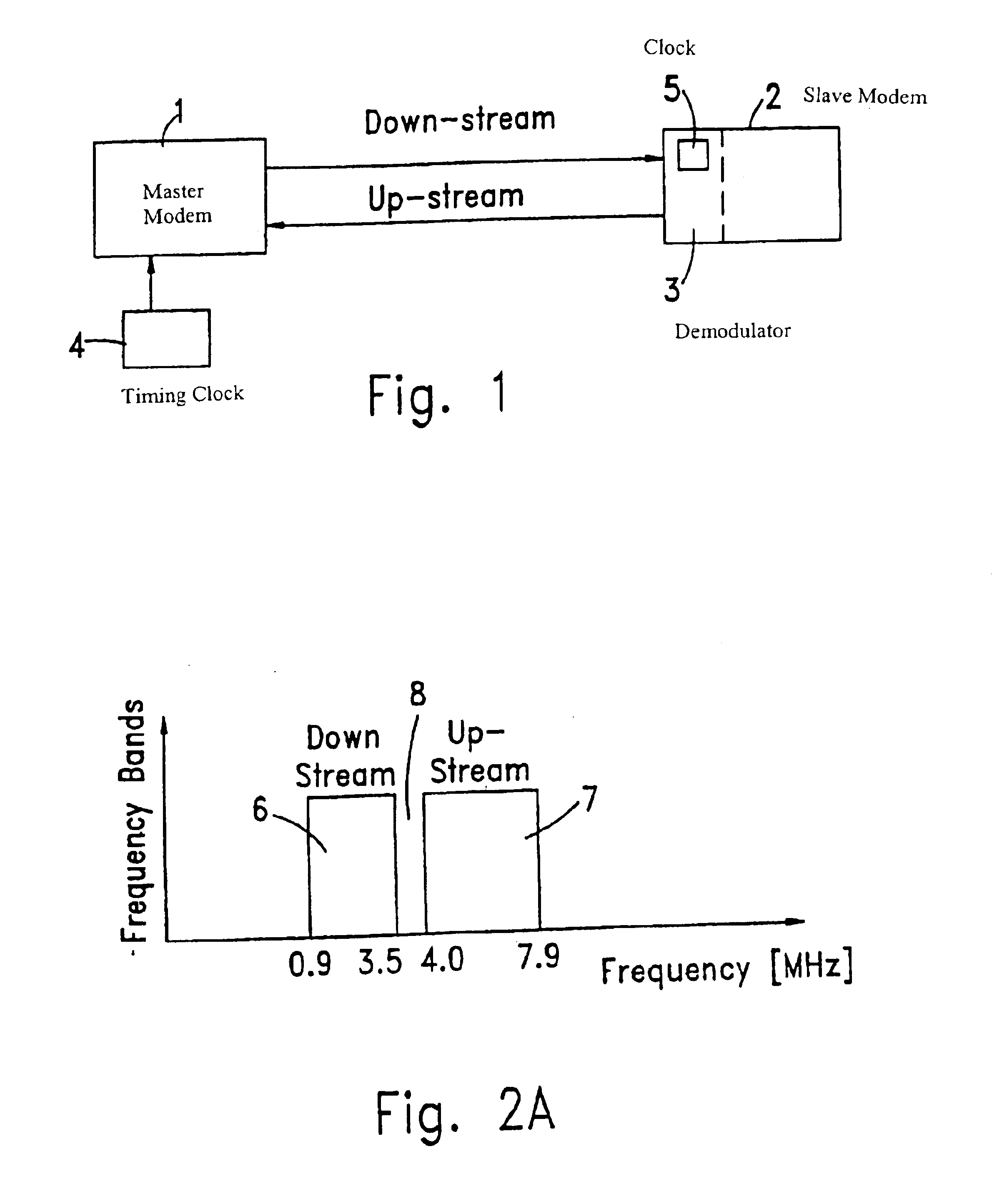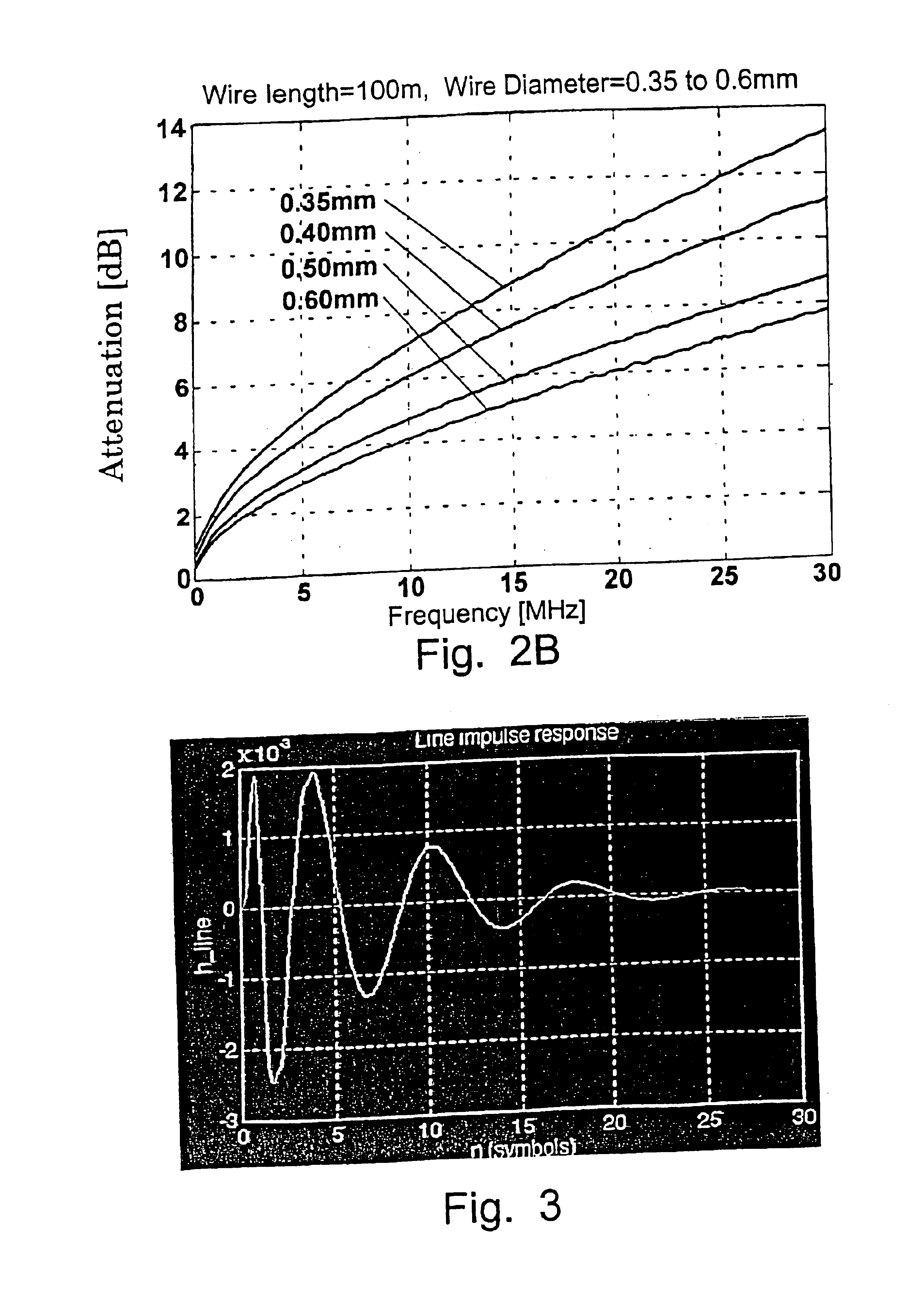Method and apparatus for clock timing recovery in χDSL particularly VDSL modems
a clock timing recovery and clock timing technology, applied in the field of digital data communication, can solve the problems of transmission medium interference with transmitted data, rate is still too low for many applications, and inability to meet the requirements of transmission data, etc., and achieves stable control voltage, reduce the cost of control circuitry, and accurate control
- Summary
- Abstract
- Description
- Claims
- Application Information
AI Technical Summary
Benefits of technology
Problems solved by technology
Method used
Image
Examples
Embodiment Construction
[0069]FIG. 1 illustrates a full duplex data communication channel between master and slave χDSL modems, using standard telephone line made from copper wires pair. A timing clock 4, which may be supplied by the local telephone system or by a Synchronous Digital Hierarchy (SDH) system, drives the master modem to transmit data (symbols) downstream to the slave modem 2. The slave modem is driven by another clock 5, which is a part of the slave's demodulator 3. Clock 5 should be synchronized to clock 4 since the clock defines the difference between symbols. After synchronization, clock 5 times the downstream symbol reception and upstream symbol transmission to the master modem.
[0070]The frequency spectrum of an χDSL channel utilizes two separated frequency bands using Frequency Division Duplex (FDD) as shown in FIG. 2A. The first band 6 occupies the range from 0.9 MHz to 3.5 MHz and is used for down-stream transmission, whereas the second band 7, occupies the range from 4 to 7.9 MHz and ...
PUM
 Login to View More
Login to View More Abstract
Description
Claims
Application Information
 Login to View More
Login to View More - R&D
- Intellectual Property
- Life Sciences
- Materials
- Tech Scout
- Unparalleled Data Quality
- Higher Quality Content
- 60% Fewer Hallucinations
Browse by: Latest US Patents, China's latest patents, Technical Efficacy Thesaurus, Application Domain, Technology Topic, Popular Technical Reports.
© 2025 PatSnap. All rights reserved.Legal|Privacy policy|Modern Slavery Act Transparency Statement|Sitemap|About US| Contact US: help@patsnap.com



